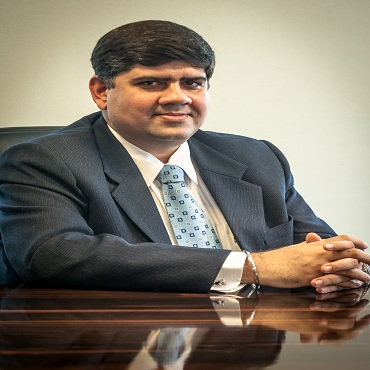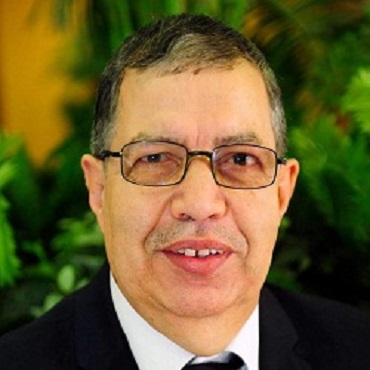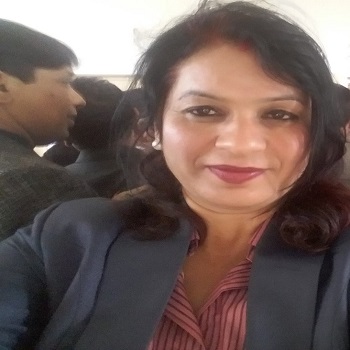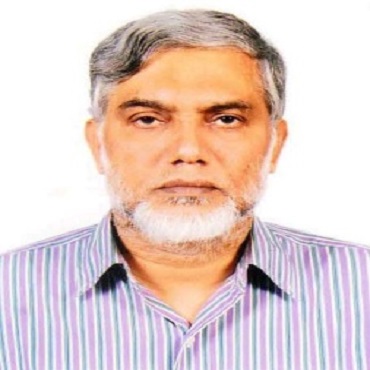Scientific Program
Keynote Session:
Title: Development of a high-performance ethanol-hydrogen peroxide fuel
Biography:
Liang An received PhD degree in Mechanical Engineering from The Hong Kong University of Science and Technology. He is currently an Assistant Professor in Department of Mechanical Engineering at The Hong Kong Polytechnic University. He has authored more than 80 journal papers. His research interests include advanced energy conversion and storage technologies, such as fuel cells and batteries.
Abstract:
In this work, we propose to create the cathode potential by introducing a redox couple to the cathode while to use hydrogen peroxide to chemically charge to redox ions. Experimentally, it is demonstrated that the ethanol-hydrogen peroxide fuel cell with a redox couple of V4/V5 yields a peak power density of 450 mW cm-2, which is much higher than that of the conventional cell with direct reduction of hydrogen peroxide.
Title: Clearly communicating about the bioeconomy: Making bioenergy research
Biography:
Anton Holland is President and CEO of NIVA Inc., a consultancy focused on all aspects of science communication and knowledge brokering. He leads the company’s strategy to assist science-based organizations bridge the gap that exists between complex science subject matter and the information demands of different audience types. He has developed keen insight into the need for clear and concise science writing for public audiences; this has provided him with the ability to find innovative ways to make the connections that help people understand science and technology.
Abstract:
The bioeconomy, of which bioenergy is a significant part, is essential to achieving a low-carbon future. But adopting the products of the research and development that support the bioeconomy is fraught with misunderstanding at many levels. For example, While the public understands that the bioeconomy is here, there is poor understanding of what it is and what it means. There is also a need for much greater understanding about the bioeconomy among policy makers in general. This lack of understanding is one of the biggest hurdles in getting policy support for what professionals who research, develop, and commercialize bioproducts are trying to accomplish. The public and some policy makers erroneously feel that sustainability is a problem when it comes to the bioeconomy—for example, the food versus fuel debate. That this is based on their biases rather than factual evidence presents significant and critical challenges that must be met. And to top it off, there is an incredible lack of knowledge in most countries about the bioeconomy’s major benefits. Very clear, non-ambiguous messaging is needed, but it’s in short supply. We are losing the opportunity to capture the piblic’s imagination about the bioeconomy. Understanding these varied audiences, knowing how to craft clear, evidence-based messages, and understanding effective approaches like plain language communication and data visualization are essential tools for all scientific and business professionals whose aim is to advance any aspect of the bioeconomy.
Title: Going Miles with Green Smiles towards Clean India
Biography:
Lt Col Monish Ahuja (Retd). is currently the Managing Director of Punjab Renewable Energy Systems Private Limited(PRESPL). He is an alumnus of the prestigious National Defence Academy, Khadakwasla, Pune. He is holding the following degrees in education proficiency: • Post Graduate(M.Tech) in Nuclear Technology from Bhabha Atomic Research Centre in 2006. • Bachelor of Technology (B.Tech) in Mechanical Engineering from JNU in 2002, • Bachelor of Science(B.Sc) from JNU in 1994. In a short span with the understanding of the Biomass IPPs and biomass supply chain management, he set up the first of its kind in India, biomass fuel aggregation and supply company Punjab Renewable Energy Systems Private Limited (PRESPL). The company has grown from a start up to INR 180 MillionTurnover Companyin 5xYears time and having closed its first round of PE investment from Zurich based Impact PE- responsAbility in 2013. This is a big force multiplier to support biomass IPPs, process industry boilers, cogeneration plants, bio-refinery industry using agri-residues feedstock and other industry using biomass as a feedstock.
Abstract:
Biomass (Lignocellulosic etc), of varied kinds, which is readily and abundantly available in vast areas of India, can be utilised to manufacture processed Bio-Fuels like Bio-Ethanol, Bio-Diesel and Bio-CNG. This will eventually lead to lesser dependency and use of fossil fuels; which are fast reducing. Biomass will become a sustainable alternate and subsequently substitute for fossil fuels.Biomass Supply Chain Management is intrinsic and critical to the envisioned Bio-Fuels scenario and therefore, it is the bedrock of the theme.
Title: NSEOR an innovation in Oil recovery
Biography:
Omar Chaalal is an Associate Professor of Chemical Engineering at Abu Dhabi University (ADU). Chaalal is an internationally renowned expert in the separation technologies. He is the inventor of the EnPro Process that deals with the sequestration of carbon dioxide and global warming reduction. He has undertaken several successful research related to CO2 cleaning in Natural Gas and subsequently two patents applications have been filed for the use of this technology. The benefits of these patents were, in addition to the environmental benefits, used in the treatment of large quantities of desalinated formation water in the oil field. Chaalal has pioneered among others the use of seawater and ammonia to reduce the effect of carbon dioxide on the environment. August 2017, Dr. Chaalal was honored with a prestigious IAAM scientist medal of year 2017 for notable and outstanding research in The Advanced Material Science and Technology during award ceremony held in Stockholm Sweden in the 23 of August.2017.Chaalal was an associate professor of Chemical Engineering at Ibn Khaldun University Algeria, as well as at the United Arab Emirates University. He was the Chief Scientist of Enpro As. Norway, a member of Al Mobdioon Center of Excellence and innovation of King Abdul Aziz University (Saudi Arabia), an Advisory Board of IIB environmental Company in Japan and a member of the board of the Journal of Nature Science and Sustainable Technology (Nova Science Publisher). He has authored 50 refereed publications, 2 European patents, 1 US patent pending and 200 presentations.
Abstract:
There are over 2 trillion barrels of conventional oil still trapped in reservoirs worldwide after conventional recovery methods showed an incapability to extract them. Based on these many techniques that involved in tertiary oil recovery were developed. However, most of these technologies limit the further development of oilfields because of their economic restrictions. Recent dramatic fall in oil prices has accentuated the problem. Now, the challenge is to fill out the growing gap between energy demand and supply with more cost effective techniques. Recently, a team of researchers in Abu Dhabi University reported an innovation base on natural surfactants for enhanced oil recovery. NSEOR technique satisfies practically all criteria discussed above.This paper presents this technique as an effective alternative to conventional enhance oil recovery. NSEOR technique avoids the use of chemical flooding that are harmful to the environment. NSEOR uses two types of plant extracts that increases the total oil recovery to 96% of initial oil in place (IOIP) during the tertiary recovery mode. While water flood recovered around 50% of the IOIP, 0.5% wt of the natural plant extract recovered 77% in the secondary recovery mode. The additives were extracted from two plants available in the United Arab Emirates (Sisyphus Spina Christi plant and Aloe Vera plant.). These natural extracts proved to be very effective in formations containing water with a salinity range of 70,000 to 180,000 ppm with temperature going up to 100 °C. NSEOR laboratory tests have shown very good and promising results. This new technique has not been applied in many oilfields around the worlds. However, this method did not receive a great attention in the petroleum industry because of its technical bottlenecks. This paper is mainly focused on discussing the basic concept, mechanism, advantages, problems and further trends of MEOR.
Title: Domestic biogas production and use to provide energy security to rural households- a case study in Nepal
Biography:
Dr. Subedi experienced energy crisis during her childhood in a rural village in Nepal. She witnessed how her parents and neighbors used to manage fuel wood for cooking and kerosene for lighting. She has been committed to contributing for clean energy development since that time. Dr. Subedi achieved her Bachelor’s degree in Civil Engineering and Masters Degree in Sociology from Tribhuban University, Nepal, and Masters Degree in Engineering from The Australian National University, Australia. She has been contributing to uplift the livelihood security of vulnerable and poor rural people in many remote districts in Nepal. While she was working in the rural communities in Nepal, she was very much encouraged when her significant contribution to the rural poor communities was rewarded frequently. She completed her PhD degree in Energy and Environment from Massey University, New Zealand, where she developed an appropriate biogas production technology, and recommended to governments for its adoptation to provide energy security to the rural poor households. Dr. Subedi is currently working as a Senior Lecturer and Unit Chief at Research and Innovation Unit, Himalaya College of Engineering, Tribhuban University, Nepal. Her main research area is Energy, Environment and Community Development. She is also a Managing Director at Krishnam Smart Engineering Solution Pvt. Ltd - which works for renewable energy development in Nepal.
Abstract:
Biogas development is one of the government's priority programmes in Nepal (WECS, 2010; Bajgain and Shakya, 2005; Katuwal and Bohara, 2009; SNV, 2010). However, the replication of the technology is still slow (BSP-Nepal, 2015). Biogas production is lower than its full capacity (Rao and Baral, 2011) and cannot cover the energy demand of a typical household all year round, especially during winter (KC. Et al, 2011, SNV, 2010, Katuwal and Bohara, 2009). Hence, this study aimed to explore the potential solution to increase domestic biogas production and use so that its benefits for energy security and environmental emission reduction can be optimised. Both quantitative and qualitative research approach were applied. Surveys of biogas households in Nepal were conducted to collect household-level information. This research analysed the effect of co-digestion of dung with agricultural residues to increase biogas yield by using Volumetric Methane Prediction (VMP) model. The cost effectiveness of co-digestion technology is checked out by using financial analysis. The impacts of improved biogas production on energy cost, energy consumption, and associated greenhouse gas (GHG) emissions reduction were obtained by using Long-range Energy Alternative Planning (LEAP) system model. This study showed that co-digestion of dung with crop residues could improve biogas production up to 150% and would meet most of the household cooking energy demand throughout the year. Also, the total annual cost of energy after co-digestion is up to 37% cheaper than the existing biogas production, and even up to 45% cheaper than the energy cost of non-biogas households. An improved production can reduce average annual energy consumption by 46-57 gigajoules and GHG emissions, mainly from avoiding deforestation, by 16.7-19.3 tCO2e per household compared to a non-biogas household.
Title: Good Impact of Bioenergy in Indonesia at this Era
Biography:
Qinthara Salsabila,collage student in Islamic State University of Sunan Ampel, from Indonesia.
Abstract:
Bioenergy is an energy which facile from vegetable or animal agricultural waste product,forestry or municipal waste industry. In Indonesia, palm oil is the main source for bioenergy utilization. Even today, Indonesia is the biggest producing country of crude palm oil. The elevation price of fuel oil in Indonesia, makes bioenergy must be substituting from fuel oil. Besides the price will be more affordable, bioenergy comes from environmentally friendly
materials too and it can be used up to a very wide range. Based from Bank of Indonesia 2017, around 75% from crude palm oil in Indonesia was exported and has donated around 29,5% from industrial exports in 2016. Utilization of bioenergy now in continued during the research period by researches. Because besides the affordable price, good impact of bioenergy utilization also can improve the country’s economy which produced from crude palm oil by great production. The rising prices of fuel oil also can be handled by changed it with bioenergy utilization to be a source of energy in this era.
Title: Energy Consumers Perceptions and Behavior Regarding Their Social and Private Energy and Environmental Costs
Biography:
Omid Mohammadzadeh Rouhani, expertise is in the area of transportation economics and transportation systems analysis. His research program focuses on: network design problems, road and congestion pricing; advanced traveler information systems; public private partnership projects, energy policy analysis; optimization techniques for transportation problems; and sustainable infrastructure systems.
Abstract:
Despite the adverse health and environmental impacts of energy consumption, consumers continue making unsustainable consumption decisions mainly due to the lack of sustainable alternatives (such as renewable energy sources, energy efficiency opportunities, public transport, etc.) and/or due to the lack of information regarding the associated energy and environmental costs. Sustainable energy consumption behavior and choices, however, are becoming increasingly vital to address growing climate change and other environmental concerns. Informing consumers of their footprints is emerging as a potential means of promoting sustainable development in forms of smart cities, advanced traveler information systems, resilient infrastructure programs, etc. However, the impact of offering such information on consumers is yet to be determined.
Title: Effect of a Local Bacteria on Physical Characteristics of Abu Dhabi Crude Oil
Biography:
Hadil Abu Khalifeh, PhD and M.A.Sc. Ryerson University Toronto, Canada. Hadil is an Associate Professor of Chemical Engineering at Abu Dhabi University (ADU) in the United Arab Emirates. Hadil has developed and implemented Enhanced Oil Recovery (EOR) processes technology in her research. Hadil has published several papers in highly regarded scientific journals in chemical engineering, and participated in a number of conferences.
Abstract:
Crude oil is the raw material for many industries to produce consumer products such as gasoline, paraffin oils, asphalt, domestic fuel oil, and polymers. In contrary, sometimes its presence can cause destruction of the environment. In this work, the characteristics of target Abu Dhabi crude oil are investigated under the influence of microorganisms (bacteria) cultivated in a green tea media. Bacteria influence on crude oil chemical composition and physical-chemical properties such as oil viscosity and surface tension are studied. Several samples were prepared using deionized water, green tea, cultivated green tea, sodium chloride and crude oil. Emulsions formation were observed for some samples. Promising results obtained can have applications in oil industry.
Title: Investigation of biogas generation from the wastes of a vegetable market in single and double chamber reactors
Biography:
Dr. Md.Abdul Jalil is a professor of Civil Engineering Department at BUET, Dhaka, Bangladesh. He received his Ph.D in Civil Engineering in 1993 from Tokyo University, Japan under ADB Scholarship. He conducted post doctoral research on water management in Loughborough University, UK under Commonwealth Fellowship. He was appointed as a Lecturer in the Department of Civil Engineering of BUET in 1986. He was promoted to the post of Assistant Professor in 1989. He became Associate Professor in 1996 and Professor in 2001. He has published over 40 papers upto now.His reserach areas are biogas generation from solid wastes, water and wastewater treatment technologies, and rain water harvesing.
Abstract:
This paper presents the results of two sets of laboratory experiments on biogas generation from the wastes of a rural vegetable market of Bangladesh under daily feed condition. The daily average composition of easily biodegradable wastes was used as the substrate for biogas generation. Cow dung, cauliflower stick, papaya and potato were the major biodegradable wastes.
Title: Sweet sorghum A promising crop for bioethanol production
Biography:
Dr. CV Ratnavathi has completed her M.Sc and M. Phil in Biochemistry from University of Hyderabad and joined Agricultural Research Service at the age of 23 years. She obtained Ph.D from Osmania University and now she is the principal scientist in Biochemistry. She has published more than 30 papers in reputed journals and has been serving as an expert member of reviewing projects funded by Ministry of new and Renewable energy, New Delhi, India.She is a reviewer of many international journals. She has completed two projects on bioethanol from sweet sorghum funded by world bank and ICAR and tested the feasibility of ethanol production in a distillery.
Abstract:
Sweet sorghum (Sorghum bicolour [L.]Moench) is the widely accepted second generation feedstock for biofuel crop in which the stem reserves the fermentable sugars. In this study selectivity of the best juice yielding genotypes (8) of the sweet sorghum (Urja, Keller, Wray, and BJ 248 varieties are exotic and SSV 74, SSV 84, CSH 22SS and CSV19SS) and selectivity of the efficient ethanol producing organisms were carried out. Three years from 2012 to 2014 crop data along the three seasons grown in randomized block design were compared for the study.











